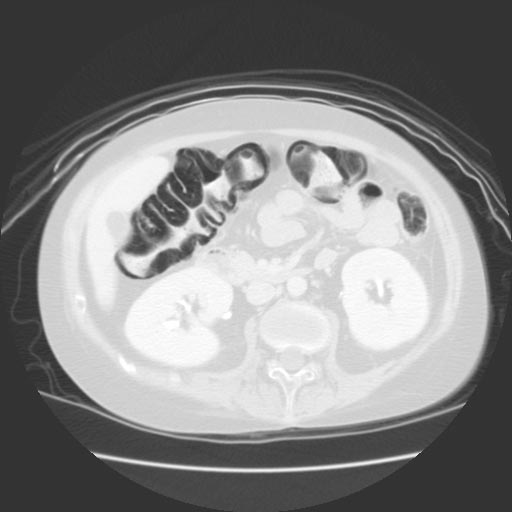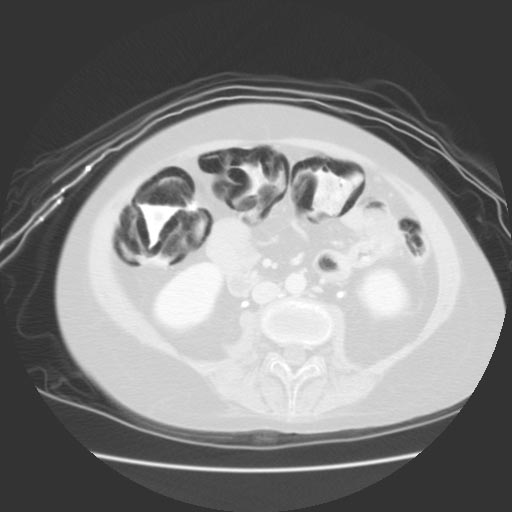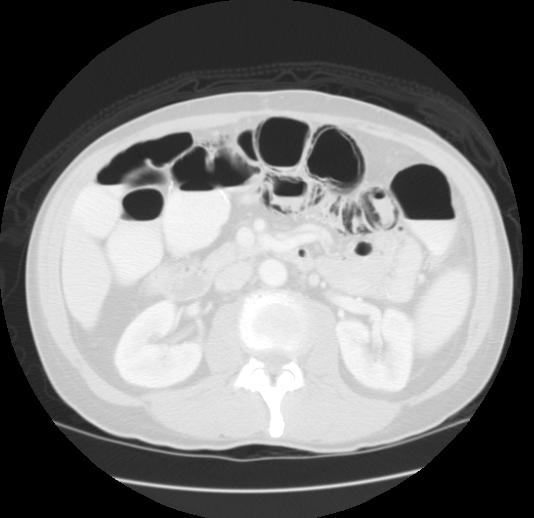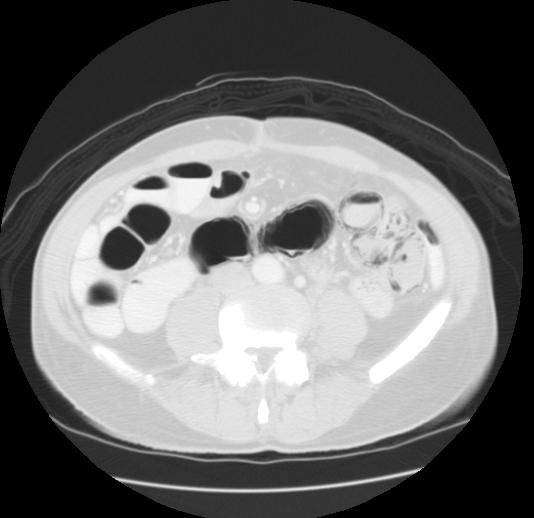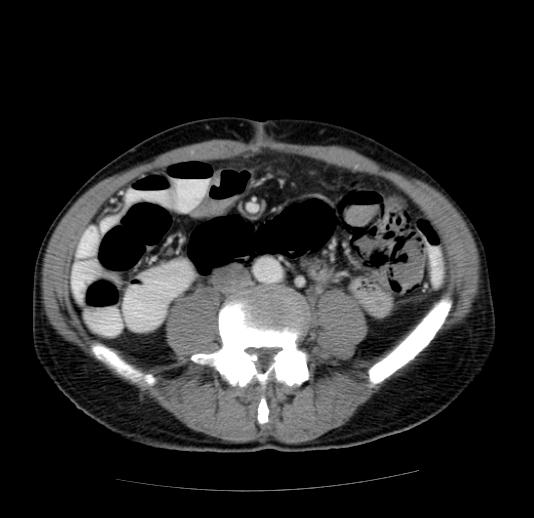Pneumatosis intestinalis: Difference between revisions
Jump to navigation
Jump to search
| Line 37: | Line 37: | ||
*[[Toxic megacolon]] | *[[Toxic megacolon]] | ||
*Trauma | *Trauma | ||
==Imaging Findings== | ==Imaging Findings== | ||
Revision as of 07:22, 11 April 2013
| Pneumatosis intestinalis | |
 | |
|---|---|
| Pneumatosis intestinalis Images courtesy of RadsWiki |
|
Pneumatosis Intestinalis Microchapters |
|
Differentiating Pneumatosis Intestinalis from other Conditions |
|---|
|
Diagnosis |
|
Treatment |
|
Case Studies |
|
Pneumatosis intestinalis On the Web |
|
American Roentgen Ray Society Images of Pneumatosis intestinalis |
|
Risk calculators and risk factors for Pneumatosis intestinalis |
Editor-In-Chief: C. Michael Gibson, M.S., M.D. [1]
Etiologies of Pneumatosis intestinalis for adults
Benign causes include
- Pulmonary: Asthma, Bronchitis, Emphysema, Cystic fibrosis
- Systemic disease: Scleroderma, Systemic lupus erythematosus
- Intestinal causes: Enteritis, Peptic ulcers, Bowel obstruction, Adynamic ileus, Inflammatory bowel disease, Diverticulitis
- Iatrogenic: Postsurgical anastomosis, Endoscopy
- Medications: Corticosteroids, Chemotherapeutic agents, Lactulose
- Organ transplantation
- Primary pneumatosis: Idiopathic, Pneumatosis cystoides intestinalis
Life-threatening causes
- Intestinal ischemia
- Mesenteric vascular disease
- Intestinal obstruction (especially strangulation)
- Colitis
- Ingestion of corrosive agents
- Toxic megacolon
- Trauma
Imaging Findings
- Although PI can be seen on abdominal radiographs, CT is the most sensitive imaging test for identification of PI.
- On both radiographs and CT, PI usually appears as a low-density linear or bubbly pattern of gas in the bowel wall. It can be a combination of both linear and bubbly bowel-wall gas. There also may be circular collections of gas in the bowel wall.
- Viewing CT images with lung windows may accentuate the detection of PI, especially in the colon.
- Circular form of PI is usually benign and most often seen with pneumatosis cystoides intestinalis (PCI).
- Linear or bubble-like PI can be due to both benign and life-threatening causes, and its radiographic or CT appearance alone does not allow differentiation between them.
- The presence of additional findings such as bowel wall thickening, absent or intense mucosal enhancement, dilated bowel, arterial or venous occlusion, ascites, and hepatic portal or portomesenteric venous gas increases the possibility of PI due to a life-threatening cause.
- PI that is confined to a portion of the small or large bowel within a specific vascular distribution also increases the likelihood that ischemia is the cause of PI.
- Intraperitoneal or retroperitoneal free air can be seen with PI due to life-threatening or benign causes.
Case Examples
Case #1
Case #2
Case #3: Pneumatosis intestinalis in this patient with aortic dissection.
Image shown below is courtesy of RadsWiki
Related Chapters
External Links
References
- Ho, Lisa M., Paulson, Erik K., Thompson, William M. Pneumatosis Intestinalis in the Adult: Benign to Life-Threatening Causes. Am. J. Roentgenol. 2007 188: 1604-1613.

